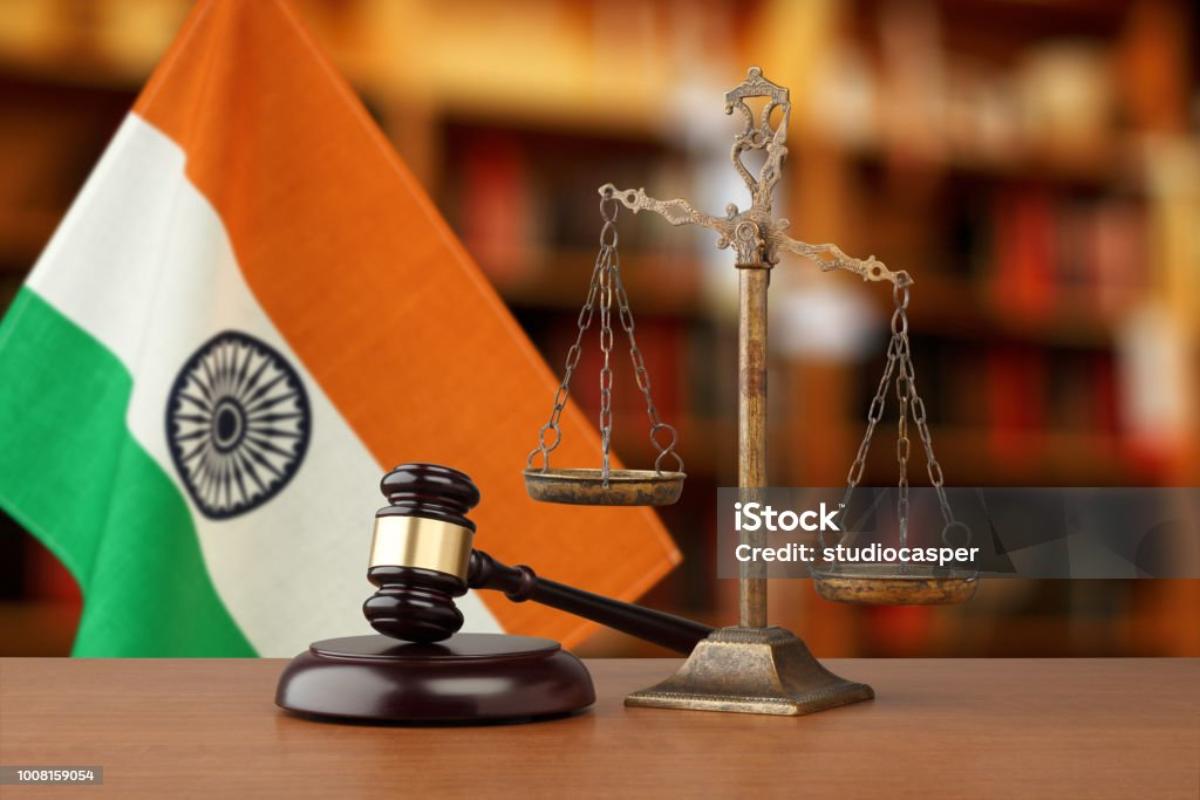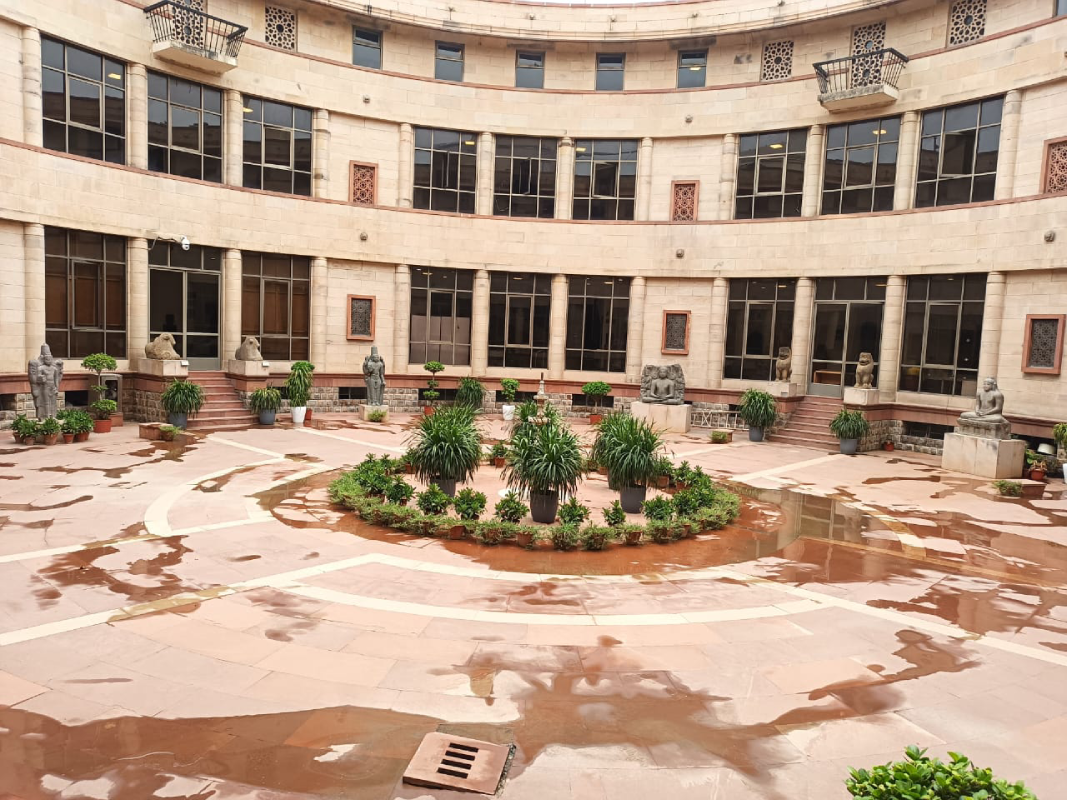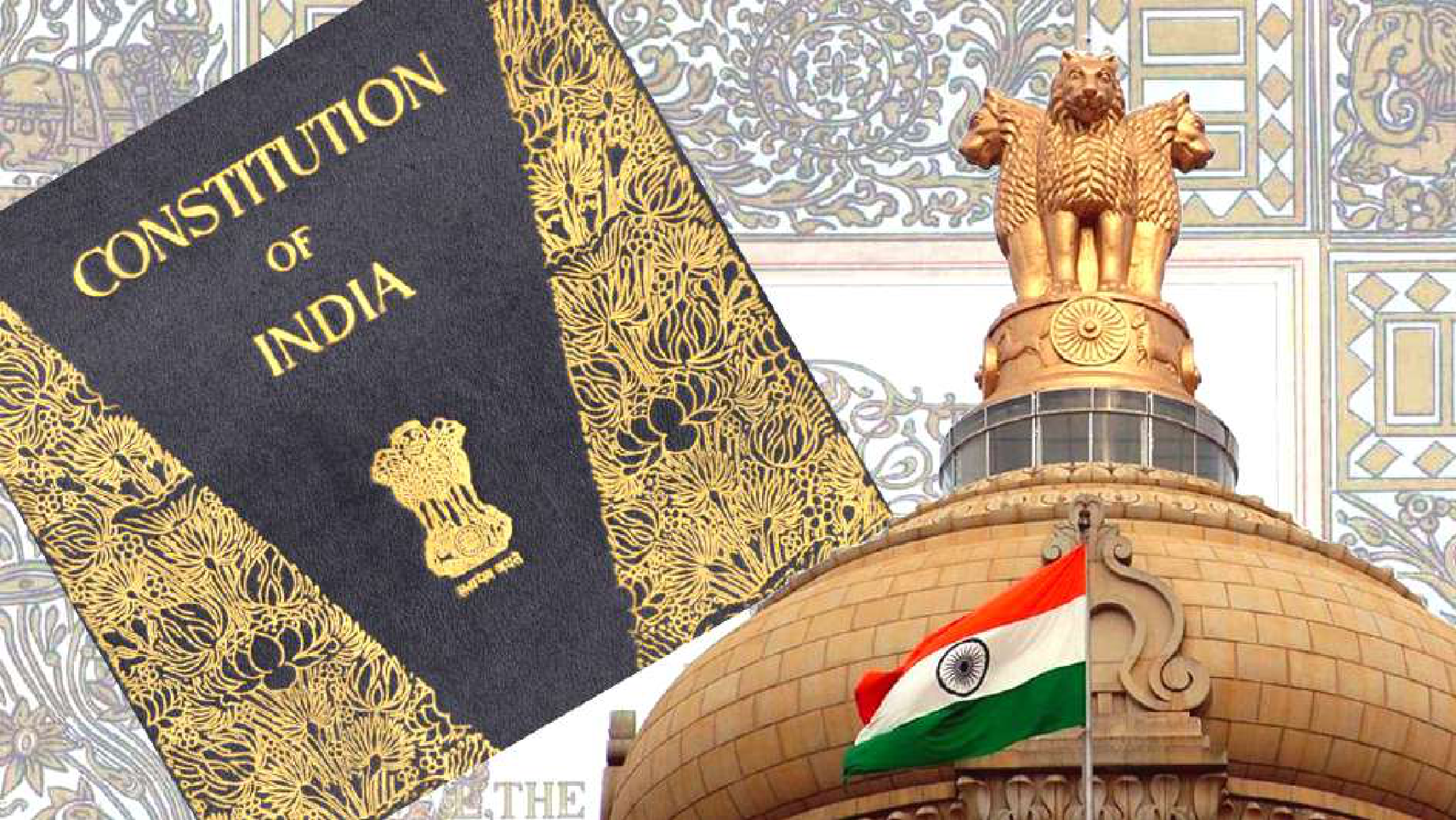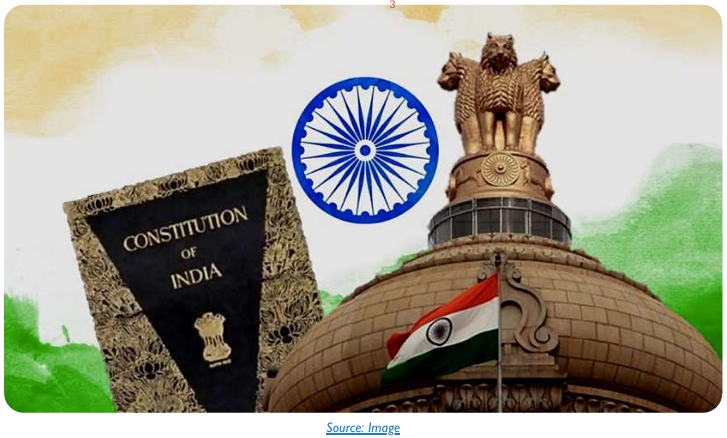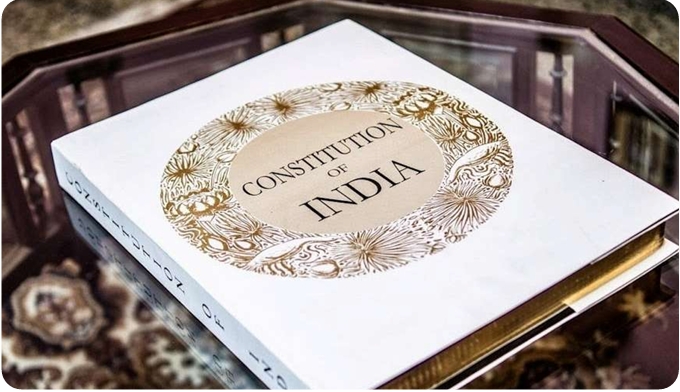Introduction
The essence of federalism lies in the sharing of legal sovereignty between the Union and the federal units. In general, the most precise way of demarcating the respective areas of the Union and federal units is to demarcate their respective areas in regard to legislation. The Indian Constitution, based on the principle of federalism, has elaborate provisions for the distribution of legislative powers between the union and states. Article 246 of the Constitution confers legislative powers on the Parliament and the State Legislatures on the subjects enumerated in the Seventh Schedule. This schedule contains three lists i.e. List I or the Union List over which the Parliament has exclusive competence, List II or the State List over which the State Legislatures have exclusive competence and List III or the Concurrent List over which both the Parliament and the State Legislatures have competence.
In addition to distribution of legislative power another integral requirement of a federal state is a robust federal judicial system which interprets the constitution, and therefore adjudicates upon the rights of the federal units and the union. While the Indian constitution has provided for a federal polity, there is no federal judiciary. The High Courts and the Supreme Court form one single integrated judiciary.
The purpose of this paper is to inquire into both, the nature of legislative power distribution between the centre and the states, as well as the nature of judiciary, in the context of federalism in India. The first part of the paper deals with the issue of legislative power. It begins by highlighting the scheme of distribution of powers, including the main principles for interpretation of legislative entries. Thereafter the paper highlights some of the important instances of union encroachment over state legislative authority. The second part of the paper deals with the Judiciary, including discussing the hierarchy of the court system and the issue of judicial appointments, transfers and removals. The final section of the paper highlights some of the key issues for judicial federalism in India.
Scheme of Distribution of Legislative Powers
In a federal system the centre and the states are supreme in their respective domains, however, harmony and coordination between them is essential for the effective operation of the system[1]. Hence, the Indian Constitution contains elaborate provisions to regulate the various dimensions of the relations between the Centre and the states. This includes the demarcation of their respective areas of legislation. The Constitution has followed the Government of India Act, 1935 in providing for a two-fold method of distribution of legislative powers[2]: (a) With respect to territory; and (b) With respect to subject matter. The constitutional provisions on this subject are provided in articles 245-254, with articles 245 and 246 dealing with territory and subject matter respectively[3].
Territorial Jurisdiction
Article 245 provides that (subject to the provisions of the Constitution)[4].
- Parliament may make laws for the whole or any part of the territory of India and
- The legislature of a State may make laws for the whole or any part of the State.
Thus, article 245 sets out the limits of the legislative powers of the Union and the States with respect to geography. However, clause (2) of Article 245 states that a law made by Parliament cannot be invalidated on the grounds that it has extra-territorial operation i.e. it takes effect outside the territory of India[5]. Thus, if any law is made by the parliament regarding extraterritorial operations, no questions can be raised on its validity purely on the grounds of extra-territoriality.
This provision can be understood on the basis of the doctrine of territorial nexus[6]. While under normal circumstances, the state legislature has the power to make laws only within its territorial jurisdiction; territorial nexus is one such exception which allows the state to make laws even for extraterritorial operations. According to this doctrine a State law, in reference to an extra-territorial operation, is valid if it can be shown that there exists a sufficient nexus between the object and the state[7]. Thus, if the State law has sufficient nexus/connection with the subject matter of the law, the State law is valid even when it has extraterritorial operation.
The doctrine of territorial nexus was first evolved by the Privy Council in the case of Wallace v/s Income-tax Commissioner, Bombay[8]. In this case, a company which was registered in England was a partner in a firm in India. The Indian Income-tax Authorities sought to tax the entire income made by the company. The Privy Council applied the doctrine of territorial nexus and held the levy of tax to be valid. It stated that since the company had derived a major part of its income for a year from British India, it gave the company a sufficient territorial connection to justify it being treated as a home company in India, for all purposes of tax on its income for that year from whatever source the income may be derived.
This doctrine was further applied by the Supreme Court in the State of Bombay v. R. M. D. C case[9]. In this case the Bombay State levied a tax on lotteries and prize competitions. The tax was extended to a newspaper printed and published in Bangalore but had wide circulation in Bombay. The respondent conducted the prize competitions through this paper. The Court held that there existed a sufficient territorial nexus to enable the Bombay State to tax the newspaper.
In A. H Wadia vs Income-Tax Commissioner Bombay[10], it was held that a question of extraterritoriality of enactment can never be posed against a supreme legislative authority, on the basis of challenging its validity, in the municipal court. The legislation may be in violation of international law, may not be recognized by foreign courts, or may pose practical challenges in implementing it, but these are policy problems that are not the concern of domestic tribunals.
Jurisdiction With Respect To Subject Matter
Article 246 of the Indian constitution provides for a threefold distribution of legislative powers between Union and the State Governments based on subject matter. The article provides that[11]:
- The Parliament has exclusive power to make laws with respect to any of the matters enumerated in List I of the Seventh Schedule (the Union List).
- The Parliament and the Legislature of any State has power to make laws with respect to any of the matters enumerated in List III in the Seventh Schedule (the Concurrent List).
- The Legislature of any State has exclusive power to make laws with respect to any of the matters enumerated in List II in the Seventh Schedule (the State List).
- The Parliament has power to make laws with respect to any matter for any territory of India not included in a State, including the matters enumerated in the State List.
The provisions of Article 246 are to be read with the entries in the Union List, State List and the Concurrent List in Schedule VII of the Indian Constitution.
- The Union List (List I): This list gives exclusive legislative powers to the union to legislate on 100 items which comprise of subjects of national importance, and uniform laws for the whole of the country. Only the parliament can legislate with respect to these matters including: defense, armed forces, atomic energy, foreign affairs, citizenship, Banking, Currency, Union Taxes etc.
- The State List (List II): This list gives exclusive legislative powers to the states on 61 items and comprises of subjects of local or state interest such as maintaining law and order, police forces, healthcare, transport, land policies, electricity in state, village administration, etc.
- The Concurrent List (List III): This list empowers both the union and the state governments with concurrent power of legislation on 52 items. This List was included to avoid excessive rigidity of a two-fold distribution. The subjects in this list are such that both the union government and the governments of the states have an interest in them including education, economic and social planning, labor welfare, electricity etc.
Broadly, the entries that are related to national importance have been allocated to the Union list and entries of local concern have been allocated to the States. The Concurrent list mostly serves as a device to loosen the excessive rigidity of the two-fold distribution by allowing the legislative power to vary from state legislature to Parliament based on the importance of the matter[12]. As per the Sarkaria Commission, concurrent list subjects are neither exclusively of national concern nor of local concern and hence occupy a constitutional ‘grey’ area[13]. The Seventh Schedule is thus indicative of the spirit of cooperation between the Union and the States. Also, it represents a limitation to powers of both Centre and States which is essential to ensure that the different institutional layers in a federal system are able to function autonomously in their respective spheres of influence.
Scheme of Interpretation of Legislative Power

The legislative power of the Centre and states are divided which prevents them from making laws outside their allotted subjects. However, the distribution of subject matter cannot be claimed to be perfectly objective, and there happens to be frequent overlap between the three lists. In such cases, questions are constantly raised on the constitutionality of a particular law and whether a particular subject falls in the sphere of one or the other government[14]. The duty to resolve such issues is vested in the Supreme Court of India. The Supreme Court follows a certain scheme of interpretation in order to determine the respective legislative power of the Union and the States, under the three lists, as given below:
1. Residuary Powers: Article 248 vests the residuary powers of legislation in the Parliament[15]. It states that the Parliament has exclusive power to make any law with respect to any matter not enumerated in the Concurrent list or the state list. Entry 97 in the Union list also lays down that the Parliament has exclusive power to make laws including any tax not mentioned in either of these lists[16]. This reflects the leaning of the constitution makers towards a strong centre.
In Union of India v H.S. Dhillon[17], the question involved was whether parliament had legislative competence to pass a Wealth-tax Act imposing wealth tax on the assets of a person on their agricultural land. The Court held that in case of a central Legislation the proper test was to inquire if the matter fell in List II (State List) or List III (Concurrent List). Once it was found that the matter did not fall under List II, the Parliament would be competent to legislate on it under its residuary power given in Entry 97 of List I. In such a case it would be immaterial whether the subject lies under List I or not.
2. Predominance of the Union List: Article 246 includes the non-obstante clause which not only talks about distribution of powers, but also explains the supremacy of powers. Article 246(1) provides exclusive powers to the parliament to make laws on subjects in the union list but also includes that clause (1) is applicable “notwithstanding anything in clauses (2) and (3)”[18]. Further, clause 246(3) provides powers to the state legislatures with respect to the state list, but includes that the applicability of clause (3) is “subject to clauses (1) and (2)”[19]. When these clauses are read together it clearly expresses the predominance of the Union List over the State List and the Concurrent List, and that of Concurrent List over the State list. Thus, in case of an overlap between the Union and the Concurrent List, or the Union and the State List, it is the Union List that will prevail, and in case of a conflict between the Concurrent List and State List, it is the Concurrent List that will prevail.
The Supreme Court of India has also held that subject to the overriding predominance of the Union List, the entries in the various lists should have a broad interpretation. In Calcutta Gas Ltd. V. state of Bengal[20], the Supreme Court held that the “widest possible” and the ‘most liberal” interpretation should be given to the language of each entry. In Prem Chand Jain v R.K. Chabra the Supreme Court held, a general word used in an entry…..must be construed to the extent to all ancillary or subsidiary matters which can fairly and reasonably be held to be included in it[21].
3. Repugnancy between Central and State Laws within the Concurrent List: Article 254 resolves the issue of any repugnancy between any law made by the union and the state relating to any subject matter in the concurrent list. According to article 254(1), if any provision of a law made by any state legislature is repugnant to any law made by the parliament, which is competent to enact a law on the matter enumerated in the Concurrent List, then in such a case, the law made by the parliament, whether passed before or after the law made by the state, shall prevail and the law made by the state shall, to the extent of the repugnancy, be void[22].
The Supreme Court in Deep Chand v. State of Uttar Pradesh[23], laid down the following criteria for determining the repugnancy between the Union Law and a State Law, upon which the union law would prevail: (a) If there is inconsistency in the actual terms of the two Statutes, i.e., when one says “do” and the other says “do not”.(b) If both the State and the Union Laws seek to exercise their powers over the same subject-matter, and (c) Though, there may be no direct conflict, the Union Law is intended to be a complete, exhaustive code, which would also render the state law inoperative.
The issue of repugnancy was further discussed by the Supreme Court in the M. Karunanidhi v. Union of India[24] case. According to the court: (a) repugnancy would arise between the two statutes if it is shown that there is a clear and direct inconsistency between the two laws (Central Act and State Act) which is irreconcilable, such that they cannot operate in the same field. (b) There can be no repeal unless the inconsistency appears on the face of the two statutes. (c) Where the two statutes occupy a particular field, but there is room for both the statutes operating in the same field to exist without coming into conflict with each other, there would be no repugnancy (d) Where a statute occupying the same field seeks to create distinct and separate provisions, no repugnancy would arises and both the statutes would continue to operate in the same field.
The above rule of predominance of central law in case of repugnancy is however, subject to the exception provided in clause (2) of Article 254. According to article 254(2), where a law made by the state legislature with respect to one of the matters enumerated in the concurrent List contains any provision repugnant to the provisions of any existing law made by the Parliament then, the law so made by the state legislature shall prevail if it has been reserved for the consideration of the President and has received his assent[25]. However, this clause does not prevent the Parliament from enacting any law in the future with respect to the same matter including a law adding to, amending, varying or repealing the law made by the state Legislature.
The principle behind article 254(2) was illustrated in the case of Zaverbhai Amaidas v. State of Bombay[26], where a central law was enacted to regulate the supply, production and distribution of essential commodities in 1946. The law also prescribed punishments for those who acted in contravention of the act. The Bombay legislature did not consider these punishments adequate and enacted another law in 1947, increasing the amount of punishment. This subsequent state law received the assent of the president and continued to operate, until 1950, when the parliament itself amended the original law and increased the punishments. The Supreme Court in the case held that the state law would become void as it was repugnant to the central law as both the laws had been enacted on the same subject of enhanced punishments.
Power of the Parliament to Legislate on State Subjects
4. Under normal circumstances the distribution of legislative powers as provided by the constitution must be strictly adhered to, and neither the State nor the Centre can encroach upon the sphere allotted to the other. However, there are certain exceptional circumstances under which the system of distribution is either suspended or the powers of the Union are extended over the subjects mentioned in the Slate List. The exceptional circumstances are as follows:
- In National Interest: According to Article 249, if the Rajya Sabha passes a resolution by a special majority that it is necessary or expedient in the national interest that the Parliament make laws with respect to any matter enumerated within the State List, then it shall be lawful for the Parliament to make laws for the whole or any part of the territory of India with respect to such matters[27]. However, such laws can only be made while the resolution is in force, which is a period of one year unless extended. Also, any law made by the Parliament during such time, will cease to have effect after the expiration of a period of six months after resolution the original has ceased to exist. This power of the Parliament is used only during national emergencies.
Article 249 was first invoked in August, 1950 with the purpose of controlling black-marketing, when in pursuance of a resolution of the Rajya Sabha, dated August 8 1950, the Parliament enacted the Essential Supplies (Temporary Powers) Amendment Act, 1950 and the Supply and Price of Goods Act, 1950[28]. Again, in 1951, pursuant to another resolution of the Rajya Sabha under this Article, the Parliament passed the Evacuee Interest (Separation) Act, 1951, which was applicable to all evacuee property including agricultural land[29]. This Act was enacted to resolve the problem relating to the rehabilitation and settlement of displaced persons from Pakistan.
- During the Proclamation of National Emergency: According to article 250 while the Proclamation of National Emergency is in operation the Parliament shall have the power to make laws for the whole or any part of the territory of India with respect to all matters in the State List[30]. Such a law, however, shall cease to have effect on the expiration of six months after the proclamation of emergency has ceased to operate. The proclamation of emergency must be such as made under Article 352. National emergency has been imposed thrice in the country: in 1962 at the time of Chinese aggression, in 1971 during the Indo-Pak war, and in 1975 on the grounds of internal disturbances.
- With Consent of States: According to article 252, if the legislature of two or more states pass a resolution to the effect that it is desirable to for the parliament to pass a law on any matter in the state list, it shall become lawful for the parliament to enact such a law[31]. Any other state may also adopt such a law by passing a resolution to that effect, and such a law can only be amended or repealed by an Act of the parliament. The Estate Duty Act, 1952, the Prize Competition Act, 1955, the Urban Land (ceiling & Regulation) Act, 1976 and the Transportation of Human Organs Act, 1994 are some laws passed by the parliament under Article 252[32].
- To Give Effect to Treaties and International Agreements: Article 253 empowers the Parliament to make any law for the whole or any part of the territory of India for implementing treaties and international agreements and conventions[33]. The normal distribution of powers cannot stand in the way of the Parliament to pass any law for giving effect to an international obligation even though such law may relate to any subject on the State List. Thus, this article enables the union government to give effect to all its international obligations and commitments.
The Environment Protection Act, 1986 was enacted by the Government of India under Article 253 of the Constitution[34]. The Act came in as a result of the Bhopal gas tragedy, as well as India’s commitment to follow the United Nations Conference on the Human Environment that took place in Stockholm in June, 1972. The Act came into force on November 19, 1986, and was extended to the whole country.
- Upon Failure of Constitutional Machinery in a State: Article 356 provides that the President of India can take over the legislative and executive powers of the state by imposing emergency in case of “failure of the Constitutional machinery” in the state[35]. It further states that President’s rule can be imposed based on a report sent by the governor, or otherwise in any circumstance that the President deems fit, upon the aid and advice of the council of ministers[36]. With the proclamation of President’s rule in a state, the elected government is dismissed and the administration of the state is directly controlled by the President through his representative governor. In such a case, the Parliament may make laws with respect to any or all the matters contained in the State List, and the laws so made by the Parliament would be operative in that State only. Such laws would continue in force until amended or repealed by the appropriate Legislature, i.e., either by the Parliament during the operation president’s rule or by the State Legislature after such a proclamation ceases to operate.
After the 1977 elections post emergency, the government at the Centre headed by the Janata Party, dismissed the Congress-led governments on the ground that they had lost the people’s mandate[37]. The matter was challenged in the Supreme Court, in the State of Rajasthan v. Union of India[38] case. A seven-judge bench dismissed the petition due to its refusal to get into political questions. Some judges even held that presidential satisfaction in invoking Article 356 of the Constitution was not justiciable.
Union Encroachment over State Authority
Since independence, despite a clear-cut division of legislative power, the issue of Centre-State disputes has been a perennial one. Mostly, such disputes arise when the Centre encroaches upon State’s power by making laws on matters that should fall under the State authority or which affects the legal or Constitutional Rights of the State.
Some Instances of Union Encroachment
i ) In 1951, the Parliament had passed the Industries (Development and Regulation) Act, 1951[39], specifying those industries, which had to the controlled by the centre in national interest. The Act, originally passed, was fair and reasonable, and gave the centre control over vital and strategic industries. However, in the course of time, more and more industries were brought within the purview of the said Act, and the result was a subversion of federalism[40]. In the 1980 Ishwari Khaitan Sugar Mills v. State of Uttar Pradesh[41] case, the centre had made an attempt to subvert the autonomy of UP government over its sugar industry.
In this case, the State Government of UP had proposed to acquire sugar industries under the U.P Sugar Undertakings (Acquisition) Act, 1971. This was challenged on the ground that these sugar industries were declared to be controlled by the union government under the Industries (Development and Regulation) Act, 1951. And accordingly, the state did not have the power of acquisition of property which was under the control of the union. However, the Supreme Court held in the case that the power of acquisition was not occupied by Industries (Development and Regulation) Act, 1951 and the state had a separate power under Entry 42 List III, and thereby upheld State autonomy.
ii) The Forty-second Amendment) Act, 1976[42], led to the introduction of Entry 2A in List 1, in order to confer on the Union Government the power to control the armed forces of the Union, such as, BSF, CRP etc. Many state governments considered this an encroachment by the Union on the fields of “public order” and “police”, both of which were the responsibility of the States under Entries 1 and 2 of List II[43]. Further, entry 2A itself contained the expression “deployment….in aid of the civil power”[44].
This meant that the State Governments had the right to requisition CRPF when they had reasons to believe that the State Police Forces will need to be aided to deal with situations of serious disturbances. And, unless there was proclamation of emergency, any deployment of forces in a State should have been only be an aid of the state government and could not be forced on the State[45]. Unfortunately, this provision has been frequently violated.
Most recently, the Ministry of Home Affairs issued a notification extending the jurisdiction of the Border Security Force from 15 km to a depth of 50 km along the international borders in three states: Punjab, Assam and West Bengal, allowing the central forces to undertake search, seizure and arrest within a larger stretch[46]. The states were not consulted before reducing the area of jurisdiction of the state authorities, which was an encroachment on their autonomy.
iii) After India became independent, the constitution framers kept education under the domain of state governments, while vesting the Union government with responsibilities to ensure standard in education. The Entry 11 of List II laid out education including universities, subject to the provisions of Entries 63, 64, 65 and 66 of List I, and Entry 25 of List III, should be a state subject[47]. Yet, several key educational responsibilities were given to the Union (the entry nos. 62, 63, 64, 65 and 66 in the Union list) which included vital areas of national importance such as technical education or agencies to determine standards of higher education.
In addition, Entry 20 under the Concurrent list allowed the Union powers related to economic and social planning in the field of education. However, the passing of the 42nd amendment 1976 led to a change in balance in favour of the Union government when education was moved to the Concurrent list[48]. The trend of centralization was furthered by the National Policy of Education (NPE) in 1986, which conferred statutory status on central-level regulatory bodies such as the AICTE and the National Council for Teacher Education (NCTE)[49].
The National Education Policy launched in 2020[50] is a further step towards the centralization of education in the country. It robs the autonomy of states by vesting overarching powers to the Union government on a host of issues. For instance the NEP has proposed to bundle out several existing regulatory bodies including UGC, AICTE, National Council for Teachers Education (NCTE) to create a singular entity called Higher Education Commission of India (HECI) to regulate key aspects of education[51]. This is going to be a top-heavy body with massive intervening powers.
Additionally, there are proposals to create overarching educational bodies such as having a National Testing Agency to offer common aptitude test for entire country. The controversies surrounding the introduction of in 2016 to standardize medical education already led to several states like Tamil Nadu openly challenging the Central government[52]. The principles of federalism demands that states should be treated as equals in key decision making processes involving education, but the NEP does the opposite[53].
iv) The 102nd amendment to the Indian constitution came into effect in August 2018 and inserted Articles 338B and 342A into the constitution[54]. Article 338B set up a National Commission for Backward Classes and Article 342A vested the power to notify a class as a ‘backward class’[55]. In the case of the Maratha Reservation[56], a constitution bench of the Supreme Court held that after the 102nd Constitution amendment, the states no longer had any power to determine backward classes. The Court observed: “By introducing Articles 366 (26C) and 342A through the 102nd Constitution amendment, the President alone, to the exclusion of all other authorities, is authorized to recognize SEBCs and include them in a list to be published under Article 342A(1), which shall be regarded to include SEBCs with each state and union territory for the Constitution.” The states can only offer recommendations to the President or the NCBC to remove, add, or change the list of backward classes.
v) A recent example of central encroachment on the state sphere was the Disaster Management Act, 2005[57], which was invoked in light of the COVID-19 pandemic. The Act caused discontent among states[58] as the Central guidelines were binding on them, even though public health is a state matter on which the Parliament could not legislate. The Disaster Management Act (DMA) itself had been enacted under entry 23 of the Concurrent list which put an added obligation on the centre to share equal powers with the states. Further, under Section 11 of DMA the national plan to deal with epidemic had to be prepared “in consultation with state governments and other expert bodies in the field of disaster management[59]” which during the pandemic was missing[60].
Attempts to Rebalance the Union vs State Powers
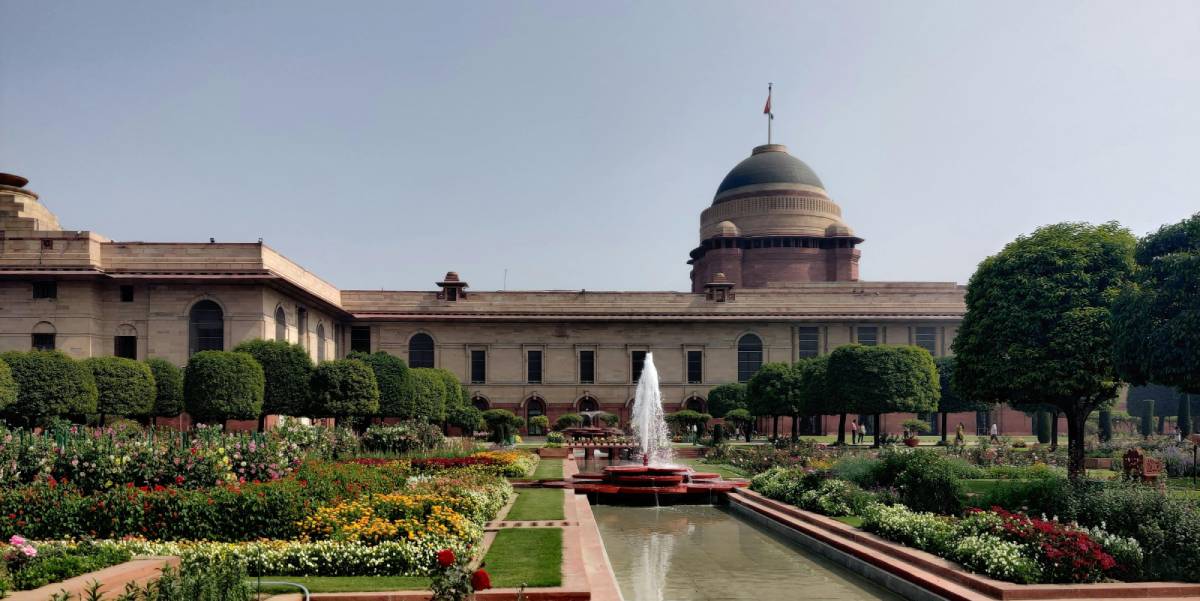
Over the years several States have demanded transfer of powers from the Centre to the States, arguing that there is an imbalance in constitutional arrangement which requires rectification[61].
In 1969, the Government of Tamil Nadu appointed a Centre-State Relations Inquiry Committee, popularly known as the Rajamannar Committee. In its 1971 report, the Committee recommended transferring several entries from the union and concurrent lists to the State List[62]. It further recommended that State Governments should be consulted regarding the legislative proposals of the Centre with respect to the Concurrent List[63]. The Union Government at the time had criticized the report claiming that it was an “overstatement of the States’ case[64]”.
Similarly, in Punjab, the Anandpur Sahib Resolution in 1973, demanded that the Centre limit itself only to defence, foreign relations, communications, railways and currency, with respect to the state, and that all residuary powers should be vested in the State[65]. A few years later the State of West Bengal adopted a memorandum on centre-state relations in 1977, recommending reformulation of the lists, demanding greater control over industries to States and also transferring residuary powers[66]. Until the 1980s these demands were not taken seriously by the Centre.
In 1983, the Central Government appointed a Commission under the chairmanship of Justice R.S. Sarkaria to review the arrangement between the Centre and the States with respect to powers, functions and responsibilities in all spheres[67]. In its landmark report published in 1988, the Sarkaria Commission recorded many of the grievances raised by various state governments[68]. However, the Commission took the view that the Centre should remain strong and transferring subjects like labour, electricity, education, etc. to the States would disturb the basic scheme of the Constitution[69].
The recommendations of the Commission were threefold[70]: 1. Residuary powers be transferred from the Union List to the Concurrent List, except for the residuary power to impose taxes which should be retained in the Union List. 2. The States should be consulted by the Centre before exercising its power over the entries in the Concurrent List. 3. The Centre should limit the field it occupies with respect to Concurrent List to only as much as is necessary for ensuring uniformity in national policy.
Similar to the Sarkaria Commission, the 2010 Puncchi Commission also recorded grievances of some State Governments regarding the division of legislative powers[71]. However, it did not recommend any major changes, mainly reiterating the need for consultation by the Central Government when legislating on a field in the Concurrent List[72].
The various commissions and reports, over the years, highlight the constant tension between the centre and the states since independence and reiterate the argument for periodically reviewing the Seventh Schedule.
Resolving Centre-State Disputes: Article 131
Under Article 131, the Supreme Court has exclusive and original jurisdiction over legal issues originating between states and the union or between states[73]. For a dispute to qualify under Article 131, it has to necessarily be between the states and the Centre, and must involve a question of law or fact on which the existence of a legal right of the state or the Centre depends. However, over the decades, the Apex Court has taken contradictory decisions on whether a state can challenge a central legislation under Article 131.
In a 1978 judgment, State of Karnataka v Union of India[74], Justice P N Bhagwati had said that for the Supreme Court to accept a suit under Article 131, the state need not show that its legal right is violated, but only that the dispute involves a legal question. But, article 131 cannot be used to settle political differences between state and central governments headed by different parties. However, in the 2011 case of State of Madhya Pradesh v Union of India[75], the Court held that Central enactments could only be challenged as writ petitions under Article 32 and 262 of the Constitution and not under the original jurisdiction of the Court under Article 131.
A few years later, in 2015 State of Bihar v Jharkhand[76], the Court again disagreeing with the 2011 judgment stated that “We regret our inability to agree with the conclusion recorded in the case of State of Madhya Pradesh v. Union of India and Anr. (supra), that in an original suit under Article 131, the constitutionality of an enactment cannot be examined. Since the above decision is rendered by a coordinate Bench of two judges, judicial discipline demands that we should not only refer the matter for examination of the said question by a larger Bench of this Court, but are also obliged to record broadly the reasons which compel us to disagree with the above-mentioned decision.” As the Court did not have the requisite bench strength to overturn the previous decision, it left the matter open. This inconclusive situation has not yet been resolved.
The State of West Bengal v. Union of India[77] is a 1962 case that also dealt with the issue of State’s rights to challenge Central Laws. While this case did not specifically deal with the question of state power to contest central laws under Article 131, its proceedings does have a bearing on the issue. The case involved the West Bengal Government challenging the Coal Bearing Areas (Acquisition and Development) Act, 1957, a Central law that allowed it the rights to acquire coal mining lands even though the land belonged to the State. The Supreme Court accepted the original suit filed by the State under Article 131, but upheld the constitutional validity of the law made by the Centre. While the court did not venture into the constitutional validity of the enactment under Article 131, its decision to hear State’s challenge against Centre under the said Article indicates that the Constitution does provide scope for the State to contest Central laws.
Despite having Articles 32 and 226 for the States to challenge the validity of Central laws, the Court must settle its position with regards to Article 131. In doing so, it will enhance the Supreme Court’s exclusive jurisdiction to hear cases on a priority that deal with centre-state disputes and potentially violate the federal structure of the Constitution.
Key Issues for an Independent and Federal Judiciary
Encroaching on Authority of High Courts
The Indian Constitution envisaged equality of power between High Courts and the Supreme Court, with a High Court not being a subordinate to the Supreme Court, except in the appellate sense. The Supreme Court has also, on many occasions, reiterated this position. Therefore, the theoretical position has always been that High Courts and the Supreme Court are equals. However, in recent years, certain trends have greatly eroded the standing of the High Courts leading to an imbalance in the federal structure of the judiciary. Some of these issues are highlighted below.
- Encroaching on Use of Article 226: Article 226 of the Constitution vests in the High Courts the power to issue directions, orders or writs, within its jurisdiction, to any person or authority, including in appropriate cases, any Government, including writs in the nature of habeas corpus, mandamus, prohibitions, quo warranto and certiorari, for the enforcement of any of the fundamental rights[78]. However, in the 2016 case of Rajasthan High Court v Union of India[79], wherein the High Court had taken suo moto cognizance of a breach of security matter at the Sanganer Airport and included the Chief Justices and the Judges of the High Court in the list of persons exempted from pre-embarkation security checks at airports, the SC had ruled to reverse the High Courts’ use of Article 226. The Bench had observed that undoubtedly breach of security at the airport is an issue of serious concern, however, “a suo moto exercise of the nature embarked upon by the High Court encroaches upon the domain of the executive” and that the judgment of the High Court was “an example of a matter where the court should not have entered in exercise of its jurisdiction under Article 226 of the Constitution[80]”. Thus, the SC encroached on the domain of HC to invoke Article 226.
- Growth of Tribunals: The concept of tribunalisation came into existence in India before independence with the establishment of the Income Tax Appellate Tribunal in 1941[81]. After independence, a need was felt for resolving administrative disputes with flexibility and speed. The core objective of tribunalisation was to provide specialised and speedy justice. The 42nd Amendment to the Constitution introduced Part XIV-A, which included Article 323A and 323B, providing for the constitution of tribunals dealing with administrative matters and other such issues[82]. According to these provisions, tribunals were to be organized and established in such a manner that they did not violate the integrity of the judicial system. However, over the years, the growth of tribunals has resulted in an encroachment on the authority of high courts. Tribunals have replaced high courts for disputes under the Companies Act, Competition Act, SEBI Act, Electricity Act, and Consumer Protection Act among others[83]. Any person aggrieved by an order of an appellate tribunal can directly appeal to the Supreme Court, side-stepping the high courts[84]. Further, critics have argued that Tribunals are also not as accessible as high courts.
In this regard, the growth of Tribunals has also given rise to the issue of their constitutionality, primarily revolving around the question of setting them up without disturbing the intrinsic powers of the constitutional courts. In multiple cases, clauses requiring direct appeals to the Supreme Court, while by-passing the High Court’s jurisdiction, have been scrutinized by the judiciary.
In S.P. Sampath Kumar v. Union of India[85] in 1986, the Supreme Court’s five-judge bench had to decide the constitutionality of Section 28 of the Administrative Tribunals Act, which abolished the High Court’s powers of judicial review. The bench concluded that the creation of’ alternative institutional structures,’ would not infringe the constitution’s basic structure. However, a 1993 decision by the High Court of Andhra Pradesh in Sakinala Harinath v State of Andhra Pradesh[86], indicated that a provision overthrowing the authority of judicial review of High Courts would be against the basic structure doctrine. Subsequently, also in 1993, the Supreme Court, in R.K. Jain v Union of India[87], criticized the reasoning behind the Sampath Kumar decision and emphasized that the scope of the High Court’s judicial review under Article 226 cannot even be ruled out by a constitutional amendment. A 7-judge bench of the Supreme Court in L. Chandra Kumar v Union of India[88] in 1997 concluded that, according to Articles 226 and 227 the right of the High Courts to exercise judicial superintendence over the judgments of all courts and tribunals is part of the constitution’s basic structure. The court held that, under Article 226, an aggrieved party should be allowed to move to the High Court in all decisions of tribunals. It also claimed that under Article 136 of the Constitution, no appeal from a tribunal decision should lie directly before the Supreme Court.
3. Withdrawal of HC Orders: In April 2021, the Supreme Court had issued an order to withdraw the orders of 6 high courts related to covid-19 and took over the cases[89]. The court stated, “We as a court wish to take suo motu cognisance of certain issues. We find that there are six high courts – Delhi, Bombay Sikkim, MP, Calcutta and Allahabad. They are exercising jurisdiction in best interest. But it is creating confusion and diversion of resources[90]”. Thereafter, the court took over four issues from the HCs including supply of oxygen, supply of essential drugs, method and manner of vaccination and power to declare lockdown.
This SC order came after high courts of Delhi and Mumbai made urgent interventions to ensure supply of oxygen to the states for the treatment of COVID-19 patients[91]. The Delhi high court had even criticized the Centre over the delay in providing oxygen supplies.
This decision of the SC was criticized by many senior advocates who believed this intervention was likely to undermine the efforts taken by the high courts with regard to holding the state governments accountable for Covid-19 management[92]. Many even called it an encroachment on the authority of high courts.
Centralized Supreme Court
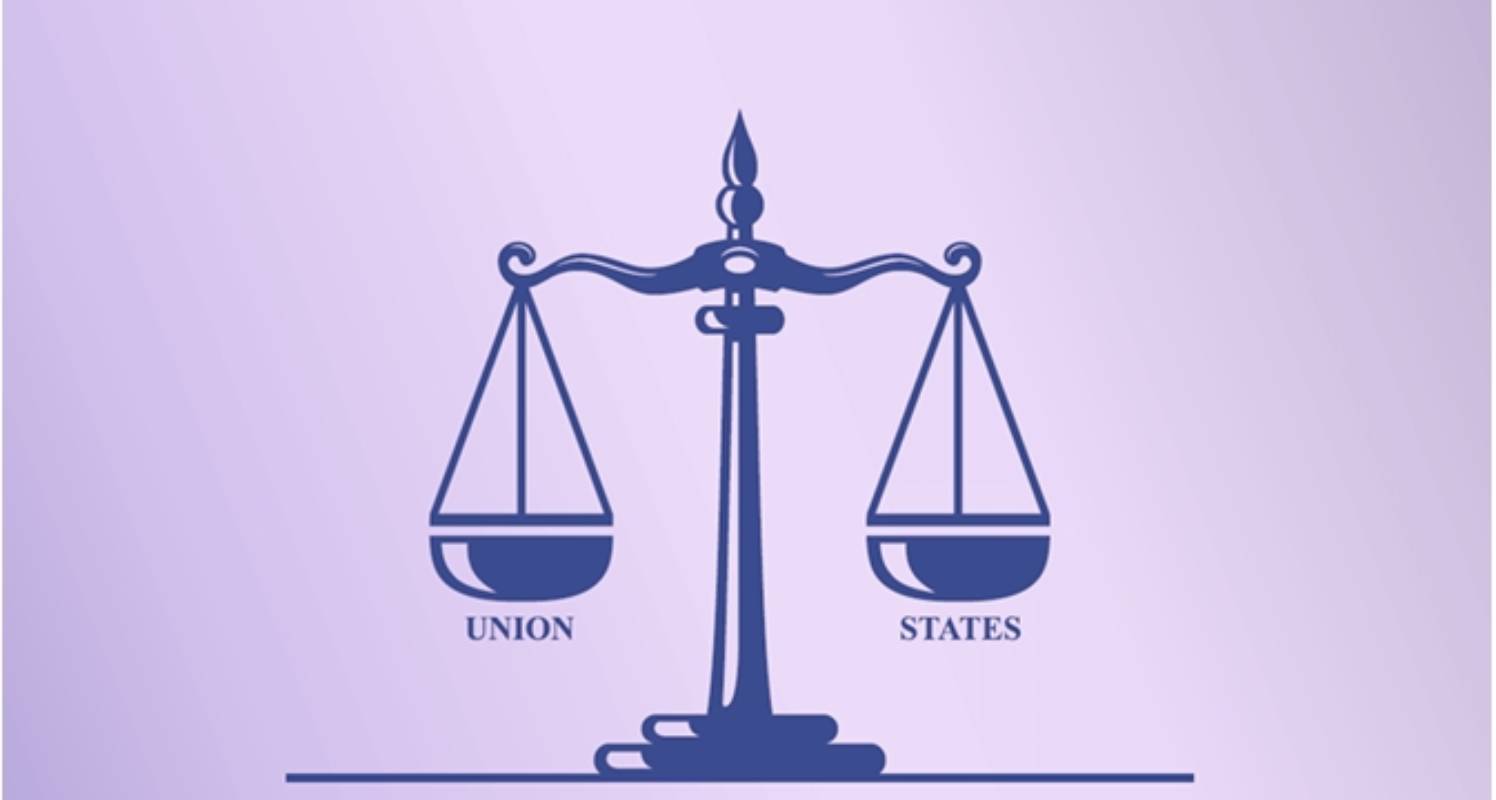
In 1950, the Supreme Court consisted of seven judges and had a case pendency of 690 cases[93]. As of 2019, the Supreme Court had a sanctioned strength of 31 judges, but case pendency had increased to 61,300 cases, making it one of the most overburdened constitutional courts in the world[94]. Amongst other reasons, frequent adjournments due to the geographical concentration of the Supreme Court in Delhi had a major contribution to the case backlog. A 2012 study had shown that of all the cases filed in the Supreme Court, the highest numbers are from high courts in the northern States[95]: 12 per cent from Delhi, 8.9 per cent from Punjab and Haryana, 7 per cent from Uttarakhand, 4.3 per cent from Himachal Pradesh, etc. The lowest figures are from the southern high courts: Kerala 2.5 per cent, Andhra Pradesh 2.8 per cent, Karnataka 2.2 per cent and a mere 1.1 per cent from Madras High Court.
In this context, the Law Commission of India in its 229th report in 2009[96], recommended that a Constitutional Bench be set up at Delhi to deal with Constitutional and other allied issues and four Cassation Benches be set up, in the Northern region at Delhi, the Southern region at Chennai/Hyderabad, the Eastern region at Kolkata and the Western region at Mumbai, to deal with all appellate work arising out of the orders/judgments of the High Courts of the particular region. Further, the 2nd (2004), 6th (2005) and 15th (2006) the Parliamentary Standing Committee on Law and Justice have also repeatedly suggested that to promote speedy justice available to the common man, benches of the Supreme Court have to be established in the Southern, Western and North-Eastern parts of the country[97].
However, the Supreme Court has repeatedly rejected proposals for setting up benches outside Delhi. A full bench of the Supreme Court had rejected the recommendations of the Law Commission in 2010 stating that it “found no justification for setting of Benches of the Supreme Court outside Delhi”[98]. While the recommendation of the Law Commission have been rejected the issue continues to be alive due to a recent Writ Petition No. 36 of 2016, filed before the Supreme Court and the matter is currently sub judice[99]. The concentration of the highest body of the judiciary in one place leads to a situation where the distance of the court becomes a reason for not approaching it. This is not healthy for proper functioning of India’s judiciary. The top court in India should be made more accessible to people across the country.
Judicial Appointments
Appointments to the higher judiciary, governed by Articles 124 and 217, for the Supreme Court and the High Courts respectively, are in hands of the executive[100]. In the early decades after independence, the appointments were made primarily by the executive after consultation with the judiciary as per the provisions of the Constitution. Although it was not specifically provided for anywhere, the norm of seniority was always followed in the appointment of Judges. However, the elevation of Justice A.N. Ray to the post of Chief Justice of India created controversy when he was appointed as the Chief Justice of India superseding three senior judges[101]. Questions were being raised on the issue of separation of the judiciary.
The provisions dealing with appointment and transfer of judges again came up for review in S.P. Gupta v President of India (First Judges Case) in 1981[102]. In the said case, it was held by the SC that the opinion of the Chief Justice did not have primacy and the Union Government was not bound to act in accordance with the opinion of the constitutional functionaries as the Executive was accountable, and the Judiciary had no accountability. This ruling gave the executive primacy over judicial appointments.
In Supreme Court v Union of India (Second Judges Case) in 1993[103], a nine judge bench of the SC overruled the First Judges Case and held that in the event of disagreement in the process of consultation, the view of judiciary was primal and the executive could appoint judges only if that was in conformity with the opinion of the Chief Justice. This case led to the introduction of the collegium system consisting of the CJI and 2 senior most judges of the SC. Thereafter, in the third judges case (not a case but an opinion delivered by SC on a question of law regarding the collegiums system) in 1998[104], the SC expanding the collegium system to a 5 member body, clarifying that it was not the CJI’s individual opinion that mattered, but an institutional opinion formed in consultation with the senior-most judges. At the time procedures and guidelines were laid down regarding judicial appointments and the executive’s role was reduced to a minimum. Thus, the Collegium system of appointment become the law of the land and has been followed ever since.
Over time several critiques of the collegiums system emerged[105]. Firstly, it was considered to be an over-reading of the constitutional provisions. It was argued that if it was the intent of the framers to have a collegium, the Constitution would have explicitly stated this. Secondly, the system of appointments also attracted criticism for carrying nepotistic tendencies. Several scholars pointed out that a system like this, where the judiciary itself decides who becomes the part of the judiciary, is highly susceptible to favouritism, and may even result in a situation of judicial aristocracy[106]. Owing to criticism, the Collegium system was sought to be done away right from 1990 with the 67th Constitutional Amendment Bill. Thereafter, it was followed by three more attempts[107]. Finally after about two decades, after several discussions and recommendations made by various committees emphasizing the need for changing the collegium system, the National Judicial Appointments Commission Act, 2104 and the 99th Constitutional Amendment Bill was introduced and received presidential assent[108]. However, the NJAC too was criticized by many for not being neutral and having too much reliance on the executive[109]. In fact, considering the importance of separation of judiciary, the NJAC could become much more problematic. If the executive decided who to appoint, the appointments would be political and the judgments would favour the executive.
Consequently, in Supreme Court v Union of India in 2015[110], both the NJAC Act and the 99th Constitutional Amendment was struck down by the Supreme Court on grounds of violation of the basic structure. The SC held that, “it is difficult to hold that the wisdom of appointment of judges can be shared with the political-executive. In India, the organic development of civil society, has not as yet sufficiently evolved. The expectation from the judiciary, to safeguard the rights of the citizens of this country, can only be ensured, by keeping it absolutely insulated and independent, from the other organs of governance”[111]. But the Bench admitted that all was not well with the collegium system of “judges appointing judges”, and that the “time was ripe to improve the 21-year-old system of judicial appointments[112].”
There is a thin line between ensuring judicial accountability and maintaining judicial independence. While the NJAC was better suited than the collegiums system at ensuring accountability, it fell short in ensuring independence. Going forward, what is needed is a system which can be fair in ensuring a balance of both independence and accountability. Bringing in more transparency in the current collegium system can be a starting point.
Conclusion
The framers of the Constitution always intended for India to have a federal system with the Seventh Schedule of the Constitution and its three constituent lists forming the backbone of legislative power allocation between the Centre and the States. Over the years, the Supreme Court of India has recognised this feature of the Indian federal structure. However, unfortunately, the parliament has used various methods to encroach upon the powers of other authorities. If this practice is not checked, then it may lay down certain precedents and enable a powerful Centre to change the very nature of federalism in India by making itself the sole repository of executive and legislative powers. Further, while the discourse around issues of political federalism in India mostly favour of greater decentralisation, the questions surrounding judicial federalism and devolution of powers among the courts are not considered sufficiently. For the court and its processes to be more meaningful, all such questions also need to be resolved, without compromising the independence of the institution.
References
Abhinav Chandrachud (2014) The Informal Constitution: Unwritten Criteria in Selecting Judges for the Supreme Court of India. New Delhi: Oxford University Press.
Alawadhi, Neha and Rouchoudhury, Arup. May 5, 2020. ‘Centre misusing disaster laws to step on states’ rights, say experts,’ Business Standard, New Delhi.
Raj Kumar & Khagesh Gautam, Questions of Constitutionality – The National Judicial Appointments Commission, 50 EPW 42 (2015).
D.D. Basu, Commentary on the Constitution of India, Part 12, 9th Edn, LexisNexis, 2018.
Elazar, Daniel J., 1987, Exploring Federalism, Tuscaloosa: University of Alabama Press.
H M Seervai (1996) Constitutional Law of India: A Critical Commentary. Vol 3. 4th edition. Mumbai: Universal Law Publishing.
Indira Jaising, National Judicial Appointments Commission – A Critique, 49 EPW 6 (2014).
Madhusudhana Rao, Authority to recommend President’s rule Under Article 356 of the Constitution, 46 (1) Indian Law Institute 125-132 (2004).
Mangal Chandra Jain Kagzi, ‘A Critique of the Rajamannar Committee Report’ in Alice Jacob (ed), Constitutional Developments Since Independence (N. M. Tripathi, 1975).
M.P. Jain, ‘Indian Federalism: A Background Paper’ in Alice Jacob (ed), Constitutional Developments Since Independence (N. M. Tripathi, 1975).
National Judicial Appointments Commission Act, 2014.
Nick Robinson et al (2011) ‘Interpreting the Constitution: Supreme Court Constitution Benches Since Independence’, 46(9) Economic and Political Weekly.
Nick Robinson. (2012). A Quantitative Analysis of the Indian Supreme Court’s Workload, Journal of Empirical Legal Studies.
—–. (2016). ‘Judicial Architecture and Capacity’ in Sujit Choudhry, Madhav Khosla and Pratap Bhanu Mehta (eds), The Oxford Handbook of the Indian Constitution. Oxford: Oxford University Press.
Prashant Bhushan, The Dinakaran Imbroglio: Appointments and Complaints against Judges, 44 EPW 10 (2009).
Press Trust of India, 25 November, 2016. ‘Rejected 43 High Court Judges Due to Adverse Intelligence Reports: Govt’, The Times of India.
Raeesa Vakil (2016) ‘Jurisdiction’ in Sujit Choudhry, Madhav Khosla and Pratap Bhanu Mehta (eds), The Oxford Handbook of the Indian Constitution. Oxford: Oxford University Press.
Rakesh Kumar Shrivastava, Versha Shah and Megha Srivastava (2014) ‘Update: A Guide to India’s Legal Research and Legal System’, Hauser Global Law School Program, New York University School of Law.
Raveendhren, R S. August 19, 2020. ‘New education policy and erosion of states’ powers,’ The Times of India, Chennai.
Reddy, Vivek K. October 30, 2017. ‘Devaluing high courts,’ The Hindu.
Report of the Centre-State Relations Inquiry Committee (1971).
Report of the Commission on Centre-State relations (2010).
Satya Prakash Dash, ‘Indian Federalism and Distribution of Responsibilities’, (2007) 68(4) Indian Journal of Political Science.
Schedule Seven, The Constitution of India.
Singh, Avtar. “Interpretation of Statutes”. Gurgaon: LexisNexis Publication, EDN.4, 2015.
The 42nd Constitutional Amendment Act, 1976.
The Sarkaria Commission Report (1987).
Venkatesan, J. February 20, 2010. ‘Supreme Court again says
Footnotes:
[1] Elazar, Daniel J., 1987, Exploring Federalism, Tuscaloosa: University of Alabama Press.
[2] https://www.legislation.gov.uk/ukpga/1935/2/pdfs/ukpga_19350002_en.pdf
[3] The Constitution of India.
[4] Article 245, Ibid
[5] Article 245(2), Ibid
[6] https://thelawexpress.com/doctrine-of-territorial-nexus
[7] Kavalappara kottarathil kochuni v. States of Madras & kerala, AIR 1960 SC 1080
[8] AIR 1948 SC 118.
[9] AIR 1957 SC 699.
[10] AIR 1949 FC 18.
[11] Article 246, The Constitution of India.
[12]https://legalaffairs.gov.in/sites/default/files/Concurrent%20Power%20of%20Legislation%20under%20List%20III%20of%20the%20Indian%20Constitution.pdf
[13] The Sarkaria Commission Report (1987).
[14] M.P. Jain, ‘Indian Federalism: A Background Paper’ in Alice Jacob (ed), Constitutional Developments Since Independence (N. M. Tripathi, 1975).
[15] Article 248, The Constitution of India
[16] Union List, Seventh Schedule, Ibid
[17] AIR 1972 SC 1061
[18] Article 246(1), The Constitution of India.
[19] Article 246(3), Ibid.
[20] AIR 1962 SC 1044.
[21] (1984) 2 SCC 302.
[22] Article 254(1), The Constitution of India
[23] 1959 AIR 648, 1959 SCR Supl. (2) 8.
[24] AIR 1979 SC 898
[25] Article 254(2), The Constitution of India.
[26] 1954 AIR 752, 1955 SCR 799.
[27] Article 249, The Constitution of India
[28] http://interstatecouncil.nic.in/wp-content/uploads/2015/06/CHAPTERII.pdf
[29] Ibid
[30] Article 250, The Constitution of India.
[31] Article 252, Ibid.
[32] http://interstatecouncil.nic.in/wp-content/uploads/2015/06/CHAPTERII.pdf
[33] Article 253, The Constitution of India.
[34] http://iced.cag.gov.in/?page_id=1026
[35] https://indiankanoon.org/doc/8019/
[36] K. Madhusudhana Rao, Authority to recommend President’s rule Under Article 356 of the Constitution, 46 (1) Indian Law Institute 125-132 (2004).
[37] https://www.orfonline.org/research/the-paradox-of-centralised-federalism/#_ftn24
[38] 1977 AIR 1361, 1978 SCR (1) 1.
[39] https://indiankanoon.org/doc/800551/
[40] http://interstatecouncil.nic.in/wp-content/uploads/2015/06/CHAPTERII.pdf
[41] 1980 AIR 1955, 1980 SCR (3) 331
[42] https://legislative.gov.in/constitution-forty-second-amendment-act-1976
[43] http://interstatecouncil.nic.in/wp-content/uploads/2015/06/CHAPTERII.pdf
[44] https://legislative.gov.in/constitution-forty-second-amendment-act-1976
[45] http://interstatecouncil.nic.in/wp-content/uploads/2015/06/CHAPTERII.pdf
[46] https://economictimes.indiatimes.com/news/defence/bsf-now-has-uniform-50-km-jurisdiction-to-arrest-search-seize-in-border-states/articleshow/87002107.cms?from=mdr
[47] Schedule Seven, The Constitution of India.
[48] https://legislative.gov.in/constitution-forty-second-amendment-act-1976
[49] https://www.education.gov.in/sites/upload_files/mhrd/files/upload_document/npe.pdf
[50] https://www.education.gov.in/sites/upload_files/mhrd/files/NEP_Final_English_0.pdf
[51] https://www.newslaundry.com/2018/07/09/heci-reform-ugc-scrapping
[52] https://scroll.in/article/849815/the-neet-fiasco-makes-it-clear-that-states-must-be-at-the-core-of-framing-indias-education-policy
[53] https://timesofindia.indiatimes.com/city/chennai/new-education-policy-and-erosion-of-states-powers/articleshow/77624663.cms
[54]https://legislative.gov.in/sites/default/files/THE%20CONSTITUTION%20%28ONE%20HUNDRED%20AND%20SECOND%20AMENDMENT%29ACT%2C2018.pdf
[55] Ibid
[56] https://www.scobserver.in/cases/jaishri-laxmanrao-patil-chief-minister-maharashtra-maratha-reservation-case-background/
[57] https://indiankanoon.org/doc/1166740/
[58] https://www.business-standard.com/article/economy-policy/centre-misusing-disaster-laws-to-step-on-states-rights-say-experts-120050501454_1.html
[59] https://indiankanoon.org/doc/1166740/
[60] https://www.business-standard.com/article/economy-policy/centre-misusing-disaster-laws-to-step-on-states-rights-say-experts-120050501454_1.html
[61] M.P. Jain, ‘Indian Federalism: A Background Paper’ in Alice Jacob (ed), Constitutional Developments Since Independence (N. M. Tripathi, 1975).
[62] Report of the Centre-State Relations Inquiry Committee (1971)
[63] Mangal Chandra Jain Kagzi, ‘A Critique of the Rajamannar Committee Report’ in Alice Jacob (ed), Constitutional Developments Since Independence (N. M. Tripathi, 1975)
[64] Ibid
[65] Satya Prakash Dash, ‘Indian Federalism and Distribution of Responsibilities’, (2007) 68(4) Indian Journal of Political Science
[66] http://interstatecouncil.nic.in/wp-content/uploads/2015/06/CHAPTERII.pdf
[67] Satya Prakash Dash, ‘Indian Federalism and Distribution of Responsibilities’, (2007) 68(4) Indian Journal of Political Science.
[68] Report of the Commission on Centre-State Relations (1988).
[69] Satya Prakash Dash, ‘Indian Federalism and Distribution of Responsibilities’, (2007) 68(4) Indian Journal of Political Science.
[70] Report of the Commission on Centre-State Relations (1988).
[71] Report of the Commission on Centre-State relations (2010).
[72] Ibid
[73] Article 131, The Constitution of India.
[74] 1978 AIR 68, 1978 SCR (2) 1
[75] https://indiankanoon.org/doc/125662/
[76] https://main.sci.gov.in/jonew/ropor/rop/all/184010.pdf
[77] 1963 AIR 1241, 1964 SCR (1) 371
[78] Article 226, The Constitution of India
[79] https://indiankanoon.org/doc/137398168/
[80] https://www.indianconstitution.in/2021/03/union-of-india-vs-rajasthan-high-court.html
[81] https://prsindia.org/billtrack/prs-products/the-tribunal-system-in-india-3750#_edn2
[82] https://legislative.gov.in/constitution-forty-second-amendment-act-1976
[83] https://www.thehindu.com/opinion/op-ed/devaluing-high-courts/article19944799.ece
[84] Ibid
[85] AIR 1987 SC 386
[86] 1993 (3) ALT 471
[87] AIR 1993 SC 1769
[88] AIR 1997 SC 1125
[89] https://www.livelaw.in/amp/top-stories/senior-lawyers-criticize-supreme-courts-move-to-transfer-covid-matters-from-high-courts-to-itself-172954?__twitter_impression=true
[90] https://www.barandbench.com/news/litigation/supreme-court-takes-suo-motu-cognizance-covid-19-harish-salve-amicus-curiae
[91] Ibid
[92] https://www.livelaw.in/amp/top-stories/senior-lawyers-criticize-supreme-courts-move-to-transfer-covid-matters-from-high-courts-to-itself-172954?__twitter_impression=true
[93] https://www.theweek.in/news/india/2019/05/16/Opinion-decoding-demand-for-decentralising-supreme-court.html.
[94] Ibid
[95] Robinson, Nick. (2012). A Quantitative Analysis of the Indian Supreme Court’s Workload, Journal of Empirical Legal Studies.
[96] https://lawcommissionofindia.nic.in/reports/report229.pdf
[97] https://theleaflet.in/can-branches-of-the-highest-echelon-of-indian-justice-delivery-system-provide-shelter-to-the-seekers-of-justice/
[98] https://www.thehindu.com/news/national//article59912350.ece
[99] https://thewire.in/government/sc-has-consistently-not-agreed-with-proposals-to-set-up-regional-benches-centre.
[100] Article 124 and 217, The Constitution of India.
[101] https://indianlegalsolution.com/justice-a-n-ray-know-your-judges/
[102] AIR 1982 SC 149
[103] (1993) Supp 2 SCR 659
[104] 1998 Supp 2 SCR 400
[105] Prashant Bhushan, The Dinakaran Imbroglio: Appointments and Complaints against Judges, 44 EPW 10 (2009).
[106] Ibid
[107] 82nd Constitutional Amendment Bill in 1997, 98th Constitutional Amendment Bill in 2003 and the 120th Constitutional Amendment Bill in 2013.
[108] https://www.thehindu.com/specials/in-depth/njac-vs-collegium-the-debate-decoded/article61470776.ece
[109] C. Raj Kumar & Khagesh Gautam, Questions of Constitutionality – The National Judicial Appointments Commission, 50 EPW 42 (2015); Indira Jaising, National Judicial Appointments Commission – A Critique, 49 EPW 6 (2014).
[110] (2016) 5 SCC 1
[111] Ibid
[112] Ibid
[113] Rakesh Kumar Shrivastava, Versha Shah and Megha Srivastava (2014) ‘Update: A Guide to India’s Legal Research and Legal System’, Hauser Global Law School Program, New York University School of Law.
[114] Ibid
[115] Article 124(1), The Constitution of India.
[116] Article 130, Ibid
[117] Article 129, Ibid
[118] Article 141, Ibid
[119] Article 145(4), Ibid
[120] Nick Robinson (2016) ‘Judicial Architecture and Capacity’ in Sujit Choudhry, Madhav Khosla and Pratap Bhanu Mehta (eds), The Oxford Handbook of the Indian Constitution. Oxford: Oxford University Press.
[121] Article 71, The Constitution of India.
[122] Article 131, Ibid
[123] Article 262, Ibid; Inter-State Water Disputes Act, 1956.
[124] Article 32(1) and (2), Ibid
[125] Article 32(4), Ibid
[126] Article 139, Ibid
[127] Raeesa Vakil (2016) ‘Jurisdiction’ in Sujit Choudhry, Madhav Khosla and Pratap Bhanu Mehta (eds), The Oxford Handbook of the Indian Constitution. Oxford: Oxford University Press.
[128] Article 132(1), The Constitution of India
[129] Nick Robinson (2016) ‘Judicial Architecture and Capacity’ in Sujit Choudhry, Madhav Khosla and Pratap Bhanu Mehta (eds), The Oxford Handbook of the Indian Constitution. Oxford: Oxford University Press.
[130] Nick Robinson et al (2011) ‘Interpreting the Constitution: Supreme Court Constitution Benches Since Independence’, 46(9) Economic and Political Weekly 27, 27-28.
[131] Article 133(1), The Constitution of India.
[132] Article 133(3), Ibid
[133] Article 134(1), Ibid
[134] Article 134(1)(c), 145(1), Ibid
[135] Article 134(2), Ibid
[136] Article 136(1), Ibid; H M Seervai (1996) Constitutional Law of India: A Critical Commentary. Vol 3. 4th edition. Mumbai: Universal Law Publishing.
[137] Article 136(2), Ibid.
[138] Raeesa Vakil (2016) ‘Jurisdiction’ in Sujit Choudhry, Madhav Khosla and Pratap Bhanu Mehta (eds), The Oxford Handbook of the Indian Constitution. Oxford: Oxford University Press.
[139] Ibid
[140] Article 143(1), The Constitution of India.
[141] Article 145(4), Ibid
[142] Article 145(5), Ibid
[143] Article 131 and 143(2), Ibid
[144] Article 139A(1), Ibid
[145] Ibid
[146] Code of Civil Procedure 1908 (Ind), s 25 (‘Code of Civil Procedure’).
[147] Code of Criminal Procedure 1973 (Ind), s 406 (‘Code of Criminal Procedure’).
[148] Code of Criminal Procedure, s406.
[149] Article 137, The Constitution of India.
[150] Article 142(1), Ibid.
[151] Raeesa Vakil (2016) ‘Jurisdiction’ in Sujit Choudhry, Madhav Khosla and Pratap Bhanu Mehta (eds), The Oxford Handbook of the Indian Constitution. Oxford: Oxford University Press.
[152] Article 142(2), Ibid.
[153] Article 138, Ibid
[154] Article 140, Ibid
[155] M.P. Jain, ‘Indian Federalism: A Background Paper’ in Alice Jacob (ed), Constitutional Developments Since Independence (N. M. Tripathi, 1975).
[156] Satya Prakash Dash, ‘Indian Federalism and Distribution of Responsibilities’, (2007) 68(4) Indian Journal of Political Science.
[157] Mangal Chandra Jain Kagzi, ‘A Critique of the Rajamannar Committee Report’ in Alice Jacob (ed), Constitutional Developments Since Independence (N. M. Tripathi, 1975).
[158] Report of the Centre-State Relations Inquiry Committee (1971).
[159] Satya Prakash Dash, ‘Indian Federalism and Distribution of Responsibilities’, (2007) 68(4) Indian Journal of Political Science.
[160] Ibid
[161] Ibid
[162] Ibid
[163] Report of the Commission on Centre-State Relations (1988).
[164] Satya Prakash Dash, ‘Indian Federalism and Distribution of Responsibilities’, (2007) 68(4) Indian Journal of Political Science.
[165] Report of the Commission on Centre-State Relations (1988).
[166] Article 230(1), The Constitution of India
[167] Nick Robinson (2016) ‘Judicial Architecture and Capacity’ in Sujit Choudhry, Madhav Khosla and Pratap Bhanu Mehta (eds), The Oxford Handbook of the Indian Constitution. Oxford: Oxford University Press.
[168] Article 227 and 235, The Constitution of India.
[169] Nick Robinson (2016) ‘Judicial Architecture and Capacity’ in Sujit Choudhry, Madhav Khosla and Pratap Bhanu Mehta (eds), The Oxford Handbook of the Indian Constitution. Oxford: Oxford University Press.
[170] Ibid
[171] The Code of Criminal Procedure applies across India. Code of Criminal Procedure, s 26(a)(ii).
[172] Code of Criminal Procedure, s 26(b), sch I.
[173] Code of Criminal Procedure s28 and s29.
[174] Nick Robinson (2016) ‘Judicial Architecture and Capacity’ in Sujit Choudhry, Madhav Khosla and Pratap Bhanu Mehta (eds), The Oxford Handbook of the Indian Constitution. Oxford: Oxford University Press.
[175] Commercial Courts Act, s 2(1)(c).
[176] Ibid
[177] Commercial Courts Act, s 15.
[178] Commercial Courts Act, s 12A.
[179] Commercial Courts Act, s 4(1).
[180] Commercial Courts Act, ss 2(1)(c), 7, 10(1)-(2).
[181] Commercial Courts Act, s 4(2).
[182] Commercial Courts Act, s 13(2)
[183] Commercial Courts Act, s 5(1).
[184] Commercial Courts Act, s 5(2).
[185] Commercial Courts Act, s 13(1A).
[186] Commercial Courts Act, s 3(1).
[187] Commercial Courts Act, ss (3)1, 1A, (2).
[188] Commercial Courts Act, ss 6, 2(1)(c), (i).
[189] Commercial Courts Act, ss 2(1)(c), 10(3).
[190] Commercial Courts Act, s 3(3).
[191] Commercial Courts Act, s 13(2).
[192] Commercial Courts Act, ss 3A, 13(1).
[193] Commercial Courts Act, s 13(1).
[194] 42nd Constitutional Amendment Act, 1976.
[195] Article 323A(1), The Constitution of India.
[196] Article 323A(2), Ibid.
[197] Article 323B(1) and (2), Ibid.
[198] Article 323B(3), Ibid.
[199] Article 124(2) and 217, Ibid.
[200] Nick Robinson (2016) ‘Judicial Architecture and Capacity’ in Jurisdiction’ in Sujit Choudhry, Madhav Khosla and Pratap Bhanu Mehta (eds), The Oxford Handbook of the Indian Constitution. Oxford: Oxford University Press.
[201] Ibid
[202] Ibid
[203] Press Trust of India, 25 November, 2016. ‘Rejected 43 High Court Judges Due to Adverse Intelligence Reports: Govt’, The Times of India.
[204] National Judicial Appointments Commission Act, 2014.
[205] (2015) AIR 2015 SC 5457
[206] Article 124(1), The Constitution of India.
[207] Article 124(3), Ibid.
[208] Article 124(2), Ibid.
[209] Ibid
[210] Abhinav Chandrachud (2014) The Informal Constitution: Unwritten Criteria in Selecting Judges for the Supreme Court of India. New Delhi: Oxford University Press.
[211] Nick Robinson (2016) ‘Judicial Architecture and Capacity’ in Sujit Choudhry, Madhav Khosla and Pratap Bhanu Mehta (eds), The Oxford Handbook of the Indian Constitution. Oxford: Oxford University Press.
[212] Article 124(2), The Constitution of India.
[213] Article 124(4), Ibid
[214] Article 216, Ibid
[215] Article 217, Ibid
[216] Ibid
[217] Ibid
[218] Abhinav Chandrachud (2014) The Informal Constitution: Unwritten Criteria in Selecting Judges for the Supreme Court of India. New Delhi: Oxford University Press.
[219] Article 222, The Constitution of India.
[220] Article 217(1)(c), Ibid
[221] Article 217(1), 218, 124(4) and 124(5), Ibid
[222] Article 233(1), Ibid
[223] Article 233(1), 233(2) and 236(a), Ibid
[224] Article 234 and 236(b), Ibid
[225] Article 235 and 236, Ibid

